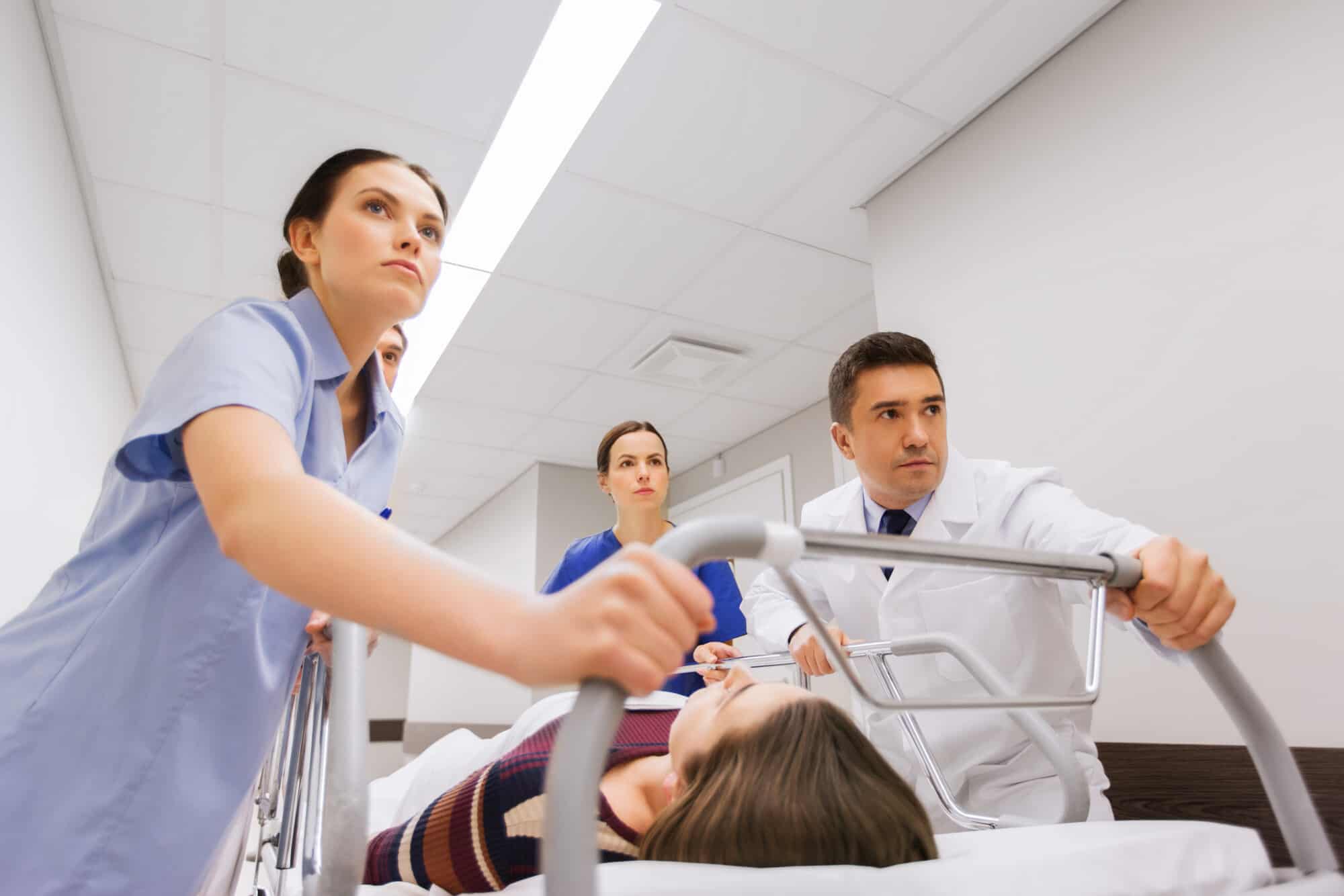Sharing is caring!
Gurney transportation is a crucial component of the healthcare sector. Whether it’s a manual gurney or a powered gurney, these pieces of equipment play an important role in the needs of many patients.
If you work in a hospital or any other type of healthcare place, it’s necessary to have some knowledge of medical devices. For this reason, we’ll be discussing the two main types of gurneys used in modern medicine.
But what is the difference between the manual vs. powered gurney? How can different patients benefit from these types of stretchers? If you want to learn more about gurney transportation, just keep on reading this article.
What Is a Gurney?
A gurney, also referred to as a stretcher, is essentially a bed on wheels used to transport patients.
In hospitals or doctor’s offices, gurneys are typically used to move sick or injured people from one place to another. They often resemble flat tables on legs with wheels, and they have light frames covered in cloth and padded material.
In emergency situations, gurneys can save lives. They allow responders to quickly move an injured or ill person to get them where they need to be in order to receive the care they need.
To carry patients with restricted mobility to their desired locations, hospitals frequently use gurney transport. Depending on their health, patients remain seated or lying down on the stretcher.
For patient protection, the stretcher is snugly and properly positioned within the car. It may be possible to arrange for two or more specialists to accompany the patient. However, this depends on their health, to make getting in and out of the car easier.
The necessity for gurney transportation differs from person to person, nevertheless. Gurneys are for more than just moving people who need medical attention.
The Differences Between a Manual vs. Powered Gurney
There are two main types of gurney transportation utilized today: manual and powered. Manual gurneys get pushed. Powered gurneys use small motors to transport patients. That’s the main difference!
Manual gurney transportation primarily involves bedridden patients who require medical attention, and it must be done carefully while paying close attention to every aspect of the patient’s health. The patient is carefully transferred from their bed to the gurney which features a side auto-locking system.
Certified gurney personnel roll the gurney inside the hospital when the patient arrives and remain there until the patient gets transferred to a hospital bed for treatment. Manual gurneys lock into place when the gurney doesn’t need to be mobile.
The gurney expert stays with the patient if they are hospitalized as an out-patient until they receive treatment, at which point they transfer them back to the gurney and drive them home.
Powered gurneys are much more efficient. They don’t need to be manually pushed by a medical professional; small motors make moving the gurney that much easier.
Powered gurneys, while more expensive, provide the same type of service to patients without the hassle of human force.
Where Are Gurneys Used?
When you think of a gurney, you probably think of a person being wheeled into an ambulance on one. However, there are many other places where gurneys are used to help people.
Yes, gurneys are frequently used in emergency situations where patients may need to be transported by ambulance. However, gurneys are also used in hospitals to move immobile or injured patients from room to room.
Additionally, gurneys are used in nursing homes and hospices to help transport elderly people. The softly padded gurneys provide a safe and efficient way to move an older person who may struggle with mobility.
The Benefits of Gurney Transportation
Regardless of what type of gurney you require, you’ll reap a variety of benefits.
Stretchers are quickly becoming common household items because they are useful in providing home care to elderly people who are immobile. For the convenience of its inhabitants, retirement homes use gurneys. Probably the number one benefit of gurney transportation is improved mobility!
Gurney transportation also ensures the safety of the patient. The main focus while transporting patients to hospitals is their safety. We have staff who have received training in gurney transportation to make sure that patients are kept safe at all times.
The comfort of patients is also a big benefit of gurney transportation. After all, we want our patients to feel calm and comfortable with their transportation methods.
To receive medical care, a patient must feel at ease while getting transported on a gurney. In order to accomplish this, our service uses contemporary model vehicles outfitted with specialist equipment to improve patient comfort when transferred from their beds at home into the vehicle.
Gurney transportation is also timely. And time is vital when it comes to the healthcare of patients!
Nobody wants to be late for a medical examination because they can’t get transported in time. Our gurney transport service takes this need into account when moving our clients.
Know the Difference Between a Manual vs. Powered Gurney
As you can see, gurney transportation helps improve the lives of many. Gurneys also play an important role in hospital healthcare and more. Now you know the difference between a manual vs. powered gurney!
Does your family member have restricted body movement? Or do they remain in bed? At Affinity Transit, we are aware of how difficult it can be to transport them safely. For gurney transportation services, check out the link!

